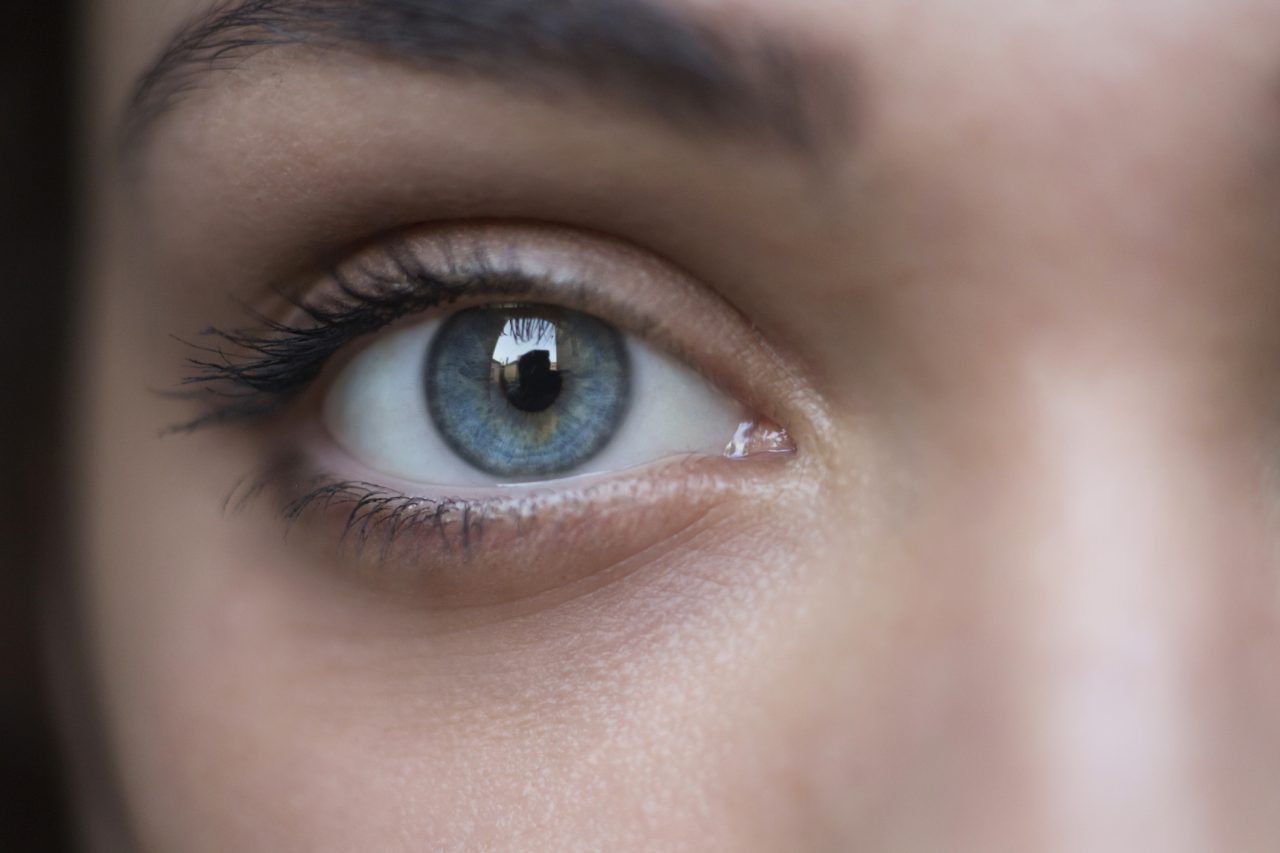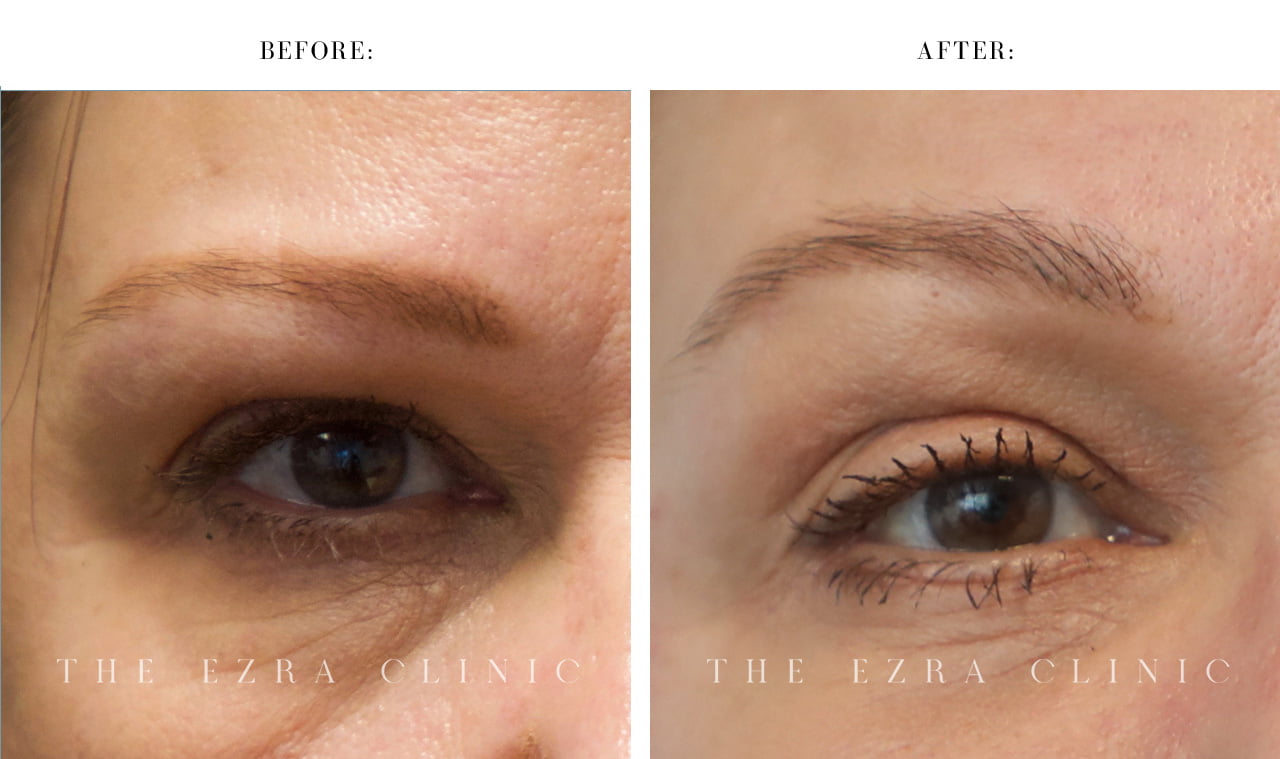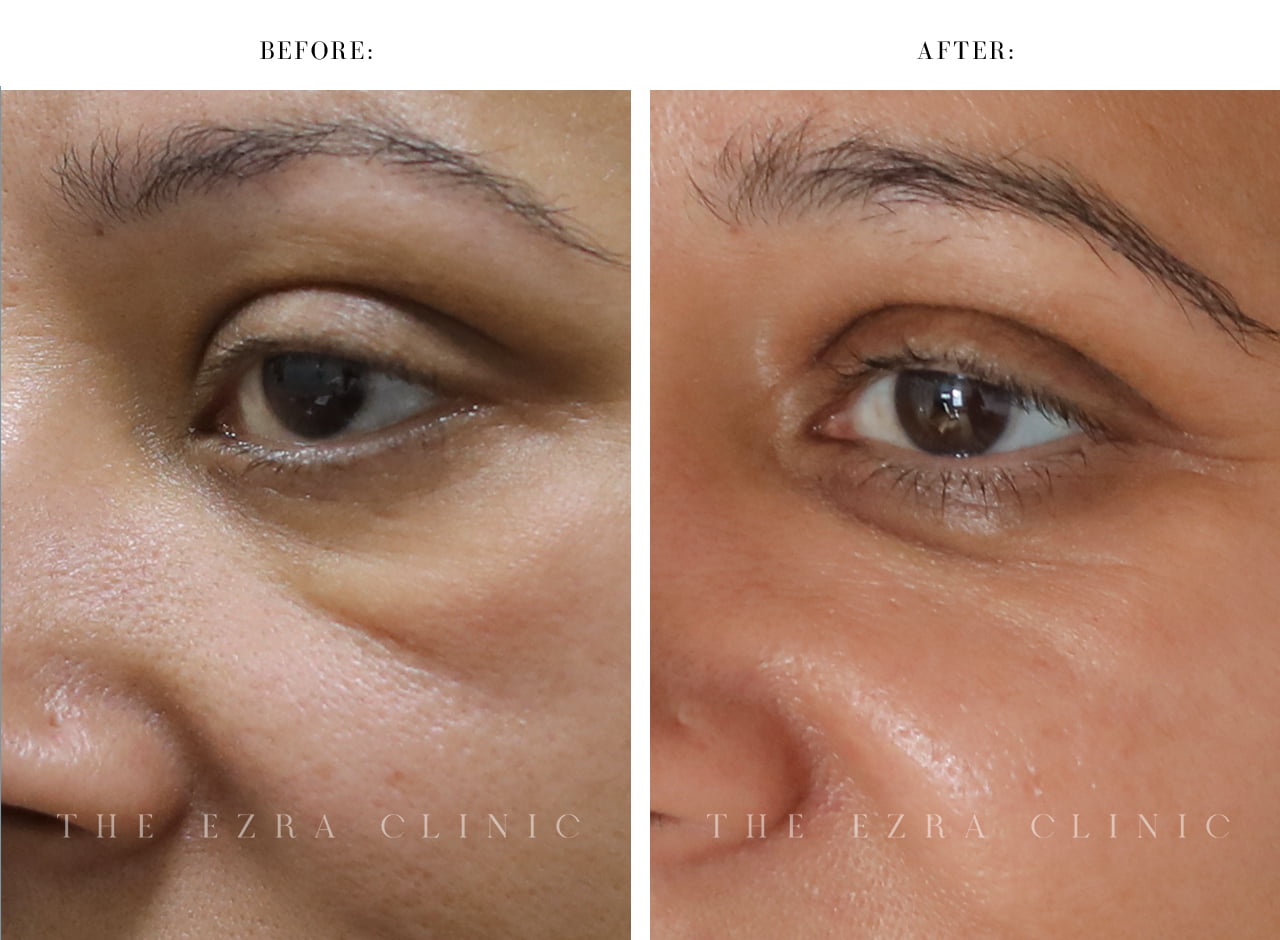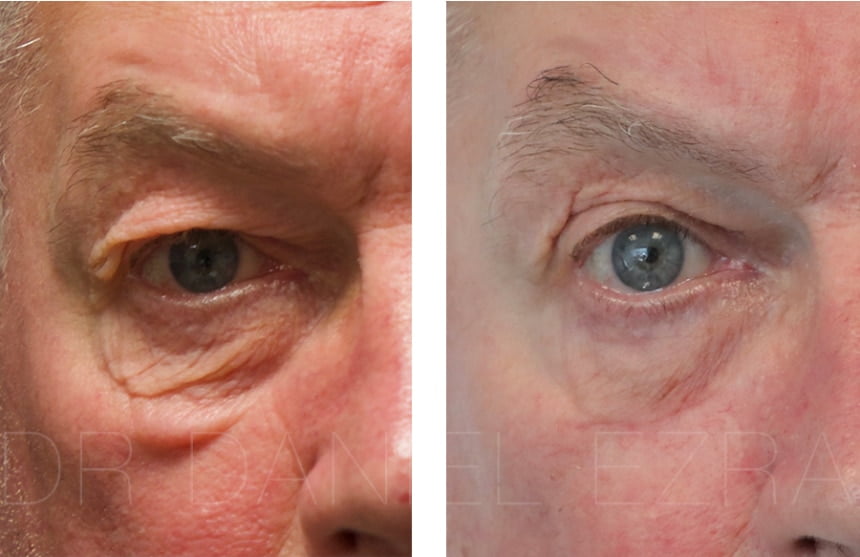What To Expect From Under Eye Bags Treatment?
The Ezra Clinic offers a personalised approach to treating malar bags and festoons. Our specialists will assess your condition during your initial consultation and recommend the most appropriate treatment.
Options include noninvasive treatments such as laser therapy and surgical procedures such as blepharoplasty or direct festoon excision. The chosen method will depend on the severity of your condition, the underlying causes, and the desired results. Regardless of the treatment, we aim to ensure you achieve natural-looking, long-lasting improvements.
Before the procedure
It’s essential to have a thorough consultation before undergoing treatment for malar bags or festoons. At The Ezra Clinic, our experts will evaluate the severity of your condition and discuss your goals.
During the consultation, we will review your medical history and assess the structure of your face to determine the best approach. Whether you opt for a non-surgical solution or a more comprehensive procedure, we will ensure you are well-informed and comfortable with your treatment plan.




